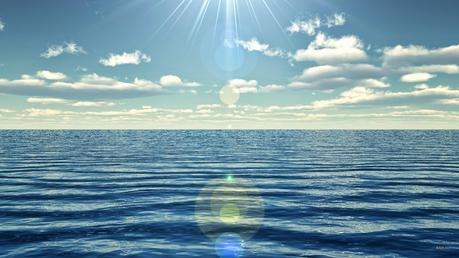
 As climate change has warmed the Earth, oceans have responded more slowly than land environments. But scientific research is finding that marine ecosystems can be far more sensitive to even the most modest temperature change.
As climate change has warmed the Earth, oceans have responded more slowly than land environments. But scientific research is finding that marine ecosystems can be far more sensitive to even the most modest temperature change. Global warming caused by human activities that emit heat-trapping carbon dioxide has raised the average global temperature by about 1°F (0.6°C) over the past century. In the oceans, this change has only been about 0.18°F (0.1°C). This warming has occurred from the surface to a depth of about 2,300 feet (700 meters), where most marine life thrives.
Perhaps the ocean organism most vulnerable to temperature change is coral. There is evidence that reefs will bleach (eject their symbiotic algae) at even a slight persistent temperature rise. Bleaching slows coral growth, makes them susceptible to disease, and can lead to large-scale reef die-off.
Other organisms affected by temperature change include krill, an extremely important link at the base of the food chain. Research has shown that krill reproduce in significantly smaller numbers when ocean temperatures rise. This can have a cascading effect by disrupting the life cycle of krill eaters, such as penguins and seals—which in turn causes food shortages for higher predators.
Higher Sea Levels
When water heats up, it expands. Thus, the most readily apparent consequence of higher sea temperatures is a rapid rise in sea level. Sea level rise causes inundation of coastal habitats for humans as well as plants and animals, shoreline erosion, and more powerful storm surges that can devastate low-lying areas.
Stronger Storms
Many weather experts say we are already seeing the effects of higher ocean temperatures in the form of stronger and more frequent tropical storms and hurricanes/cyclones. Warmer surface water dissipates more readily into vapor, making it easier for small ocean storms to escalate into larger, more powerful systems.
These stronger storms can increase damage to human structures when they make landfall. They can also harm marine ecosystems like coral reefs and kelp forests. And an increase in storm frequency means less time for these sensitive habitats to recover.
Other Consequences
Warmer sea temperatures are also associated with the spread of invasive species and marine diseases. The evolution of a stable marine habitat is dependent upon myriad factors, including water temperature. If an ecosystem becomes warmer, it can create an opportunity where outside species or bacteria can suddenly thrive where they were once excluded. This can lead to forced migrations and even species extinctions.
Warmer seas also lead to melting from below of polar ice shelves, compromising their structural integrity and leading to spectacular shelf collapses. Scientists also worry that warmer water could interrupt the so-called ocean conveyor belt, the system of global currents that is largely responsible for regulating Earth's temperature. Its collapse could trigger catastrophically rapid climate changes.
Will It Continue?
The only way to reduce ocean temperatures is to dramatically reign in our emission of greenhouse gases. However, even if we immediately dropped carbon dioxide emissions to zero, the gases we've already released would take decades or longer to dissipate.
From: The Ocean, National Geographic

